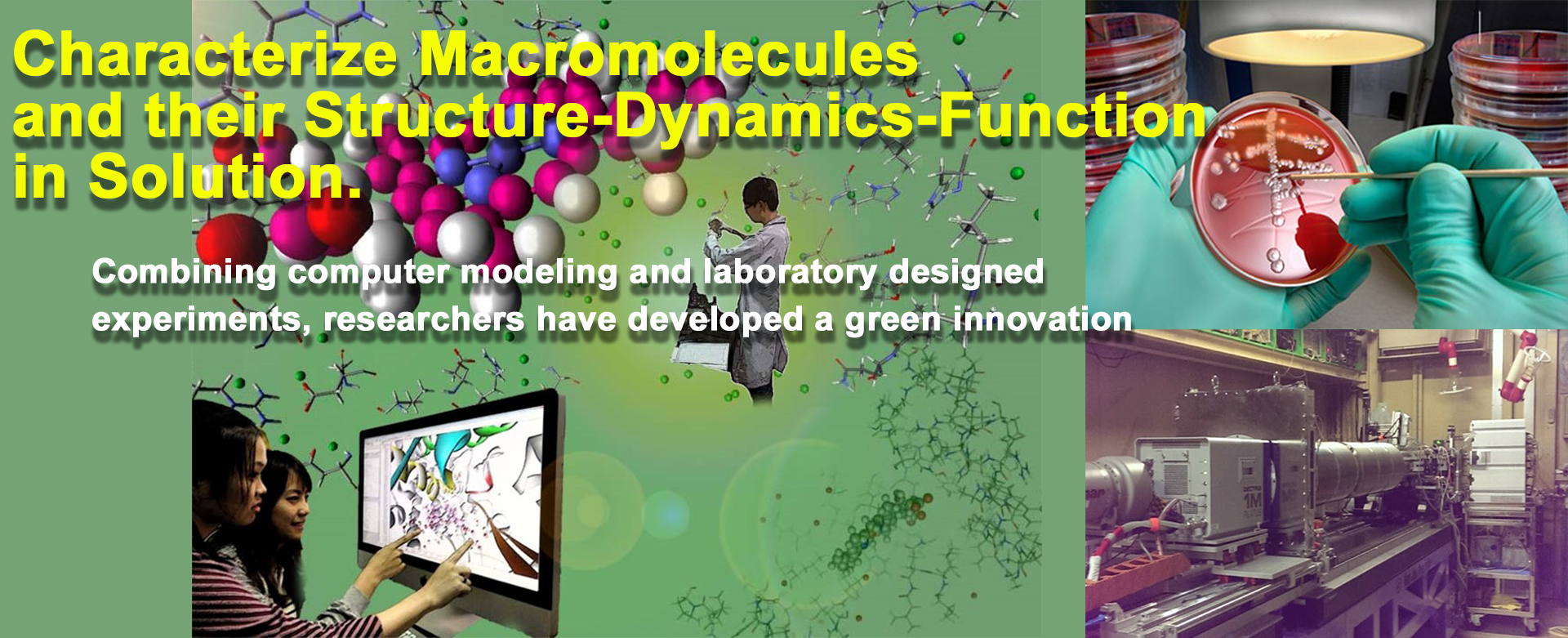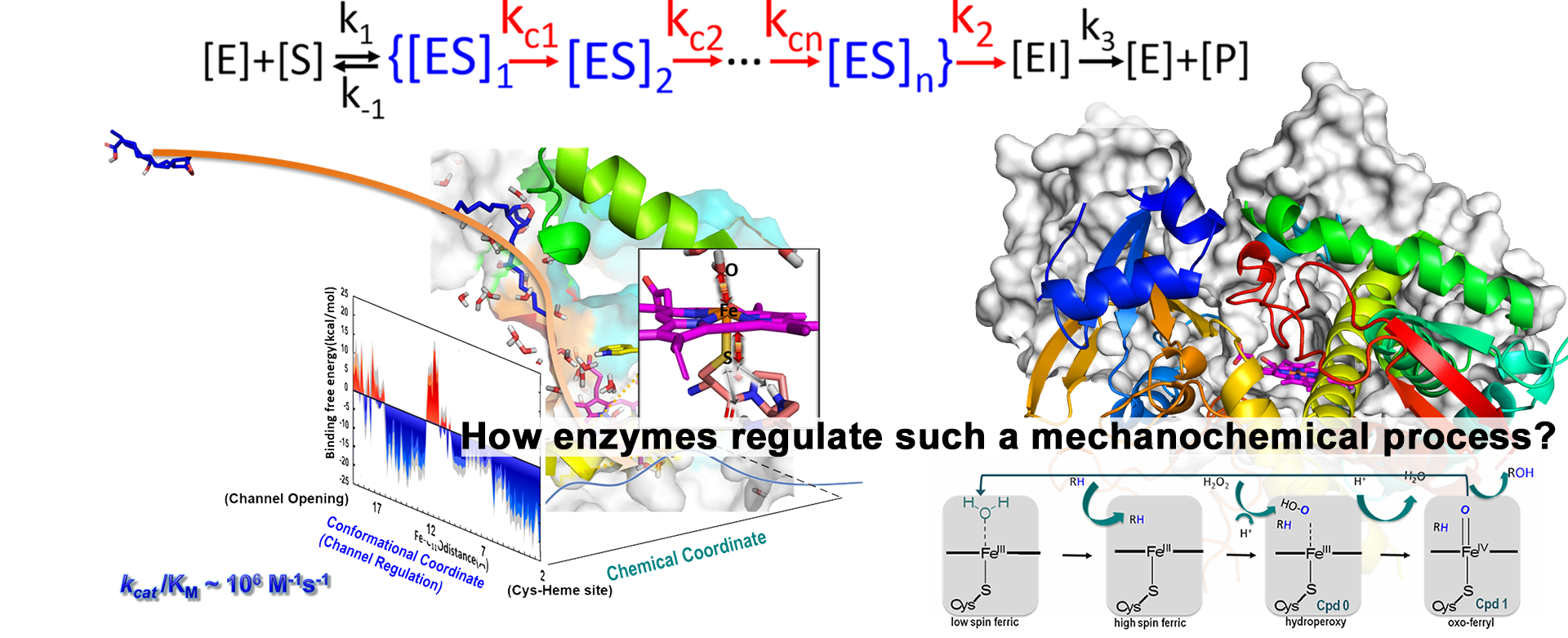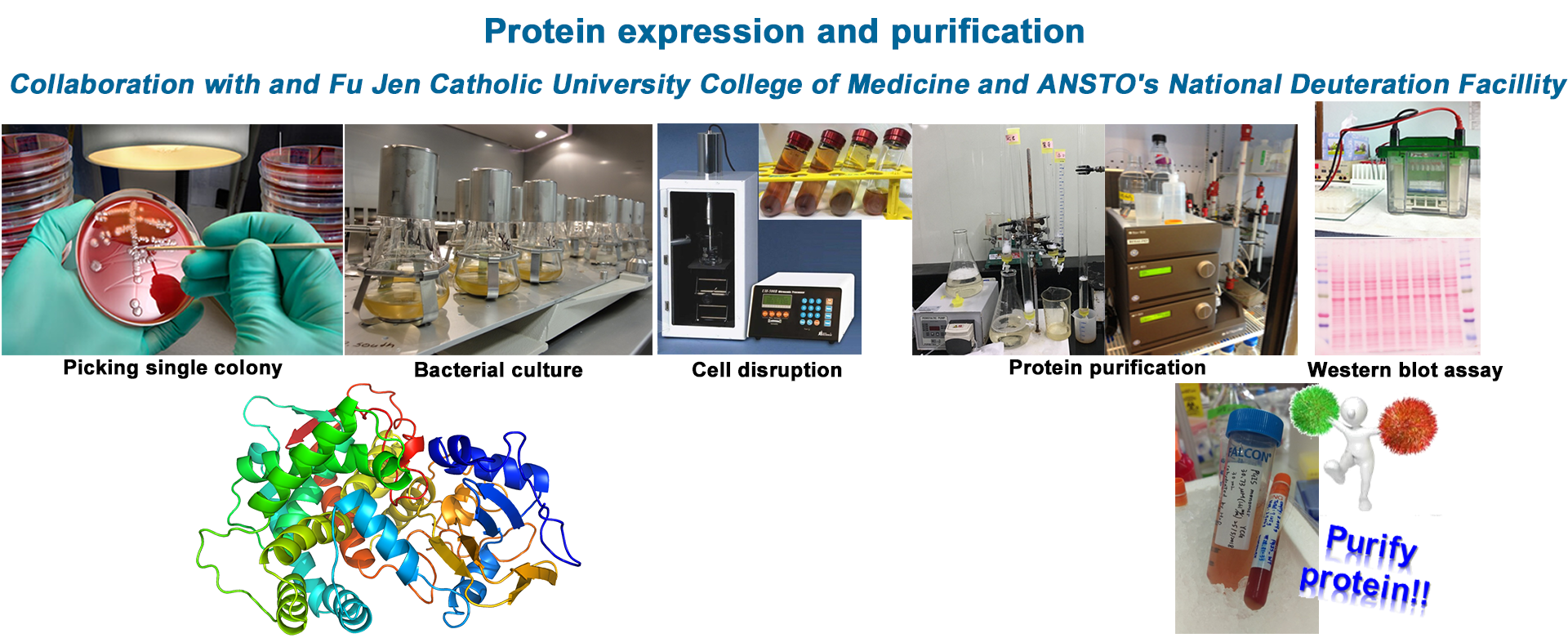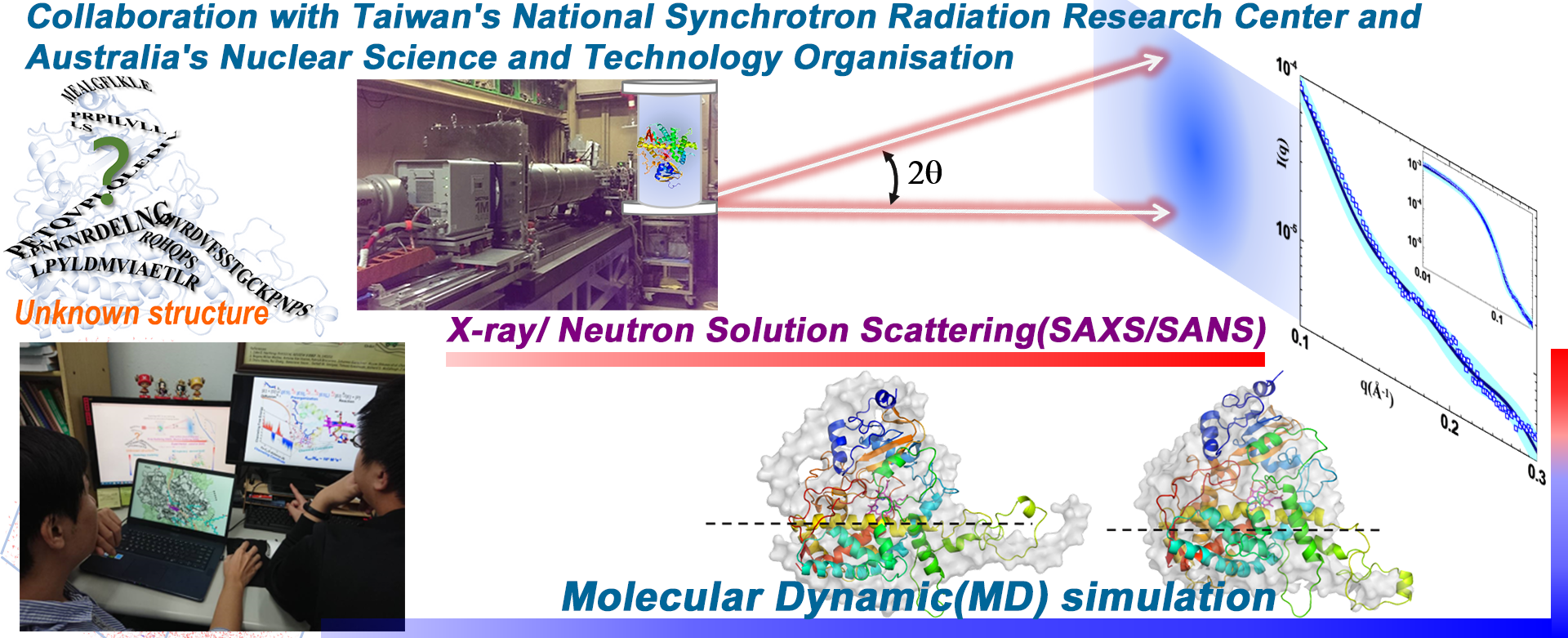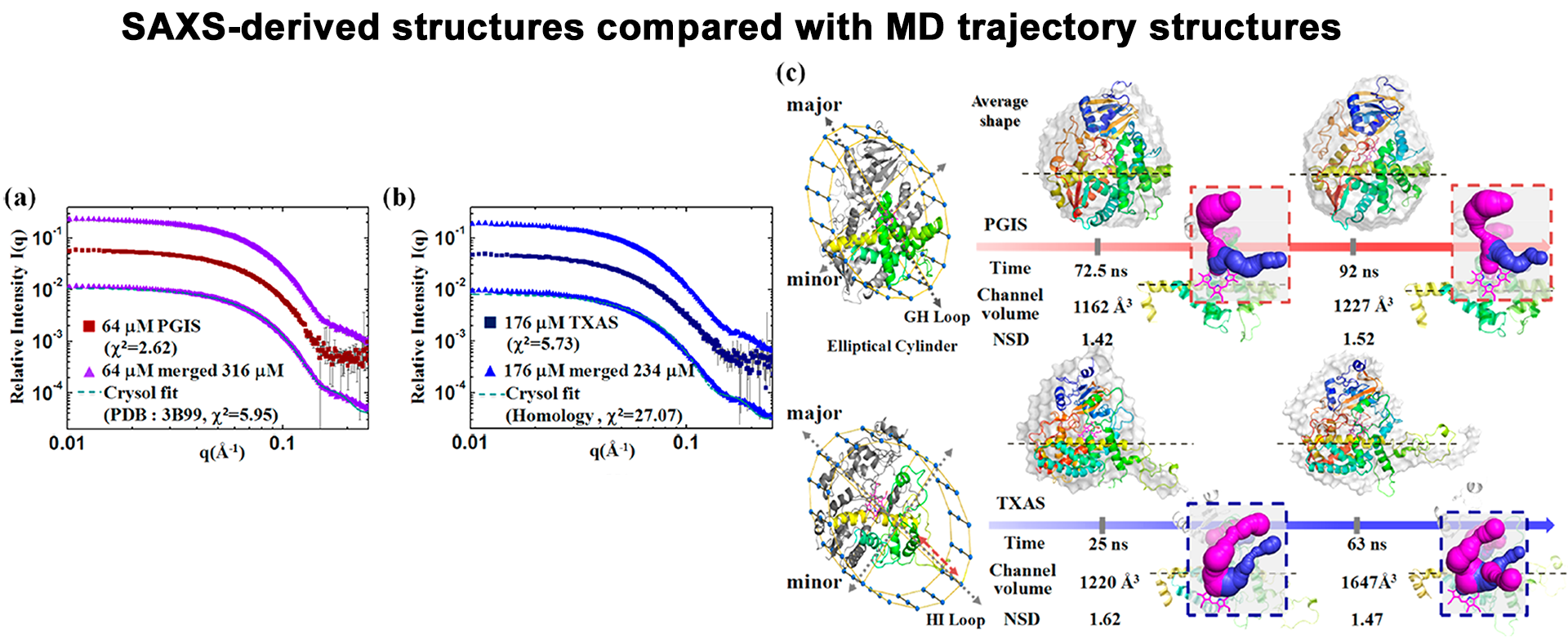Characterize Macromolecules and their Structure-Dynamics-Function in Solution
Enzymes are dynamical systems that perform homeostatic abilities, in precise control of their local environment through inter-conversions of chemical and mechanical energy and self-regulating feedback connections organized hierarchically across many scales of states. However, little is currently known about the fundamental molecular mechanisms by which enzymes sense mechanical force or deformation, and transducer the mechanical signal into a chemical/biological response.
Dr. Yang’s research is directed primarily toward developing and applying modern computational, theoretical capabilities and designed experiments for the understanding and prediction of chemical and physical processes ranging from the molecular to the nanoscale to comprehensive applications, elucidating the mechanistic and stereochemical course of electrocyclic organic reactions, characterizing processes and the nature of inter- and intramolecular interactions governing complex structure, molecular recognition, etc. by which are degraded in physical chemistry and biophysics.
The inspiration that X-rays could reveal the crystallographic structures inevitably gave way to the perspiration required to solve more and more complicated biological macromolecules in solutions. X-ray/Neutron scattering has been applied more recently to the study of biomolecules, starting from the late 1980s, but the method, particularly in difficulty of data analysis, is now established as an indispensable tool for their application of structures can be mapped. Dr. Yang has focuses on the SAXS data analysis by incorporating innovated methodologies of computational chemical dynamics that allow one to meaningfully interpret the scattering data from monodisperse systems, from transient complexes as well as flexible and heterogeneous systems in terms of structural models. Yang’s group current interest has focused on the hybrid approaches utilizing SAXS with high-resolution molecular dynamics simulation techniques, but also with biochemical, biophysical, and numerical programming methods by a series of breakthrough experiments with the synchrotron/neutron beamline (TLS 23A at NSRRC/ QUOKKA at ANSTO) and developed computational techniques for solving the inverse mapping problems of X-ray/neutron scattering. Dr. Hsiao-Ching Yang’s research makes efforts to open the field to a new avenue with explosive positive development of value for pure science and practical applications.
123 views